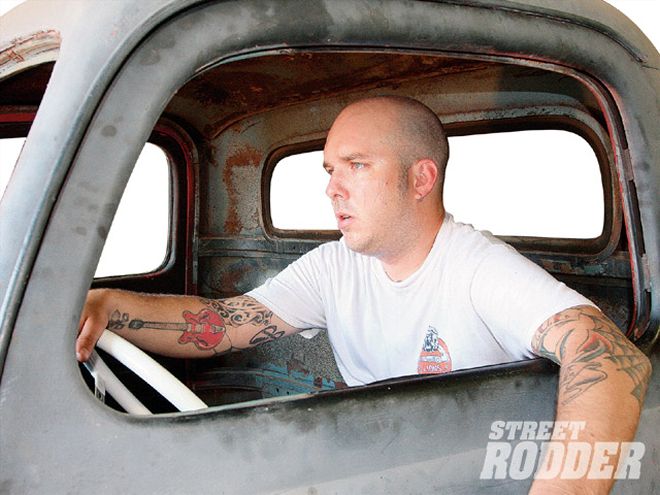

These days, it's hard to argue the merits of modern conveniences like independent suspension, fuel injection, power steering, and air conditioning without someone mentioning how it's not traditional. And while I typically agree with these naysayers, there are conditions that I'll grant a guy amnesty. As a hot rodder who's more akin to the postwar build style than the contemporary, swoopy designs, I cringe just the same as other so-called traditionalists when I see things like clunky EFI setups atop a flathead or a roadster with independent suspension jutting out from the framerails. Unlike some of those "old-timers," I can be partial and give guys who want those modern conveniences some slack; all within reason of course.
That having been said, the F-1 pickup I've been building over the last year or so includes a number of modern amenities that I wouldn't normally have fathomed putting into a vehicle some years back. Consolations were made, however, for when it came to things like putting a power rack-and-pinion unit in when I upgraded the straight axle to a Heidts Mustang II setup, I just couldn't think of a reason not to. For one, you can't see the rack for the most part and I managed to hide the pump as well beneath the driver side head of the Hemi. The truck is supposed to end up as my daily driver, and having driven cars for years with a stock box, it just seemed like the most logical thing to do. And if my girlfriend ever wants to drive it, it will make it that much easier for her to hop in and enjoy.
The other amenity I decided to go with was a Vintage Air climate control unit, a Compac GEN-II kit to be exact. While I regressed on my decision to keep everything period perfect by placing the compressor in plain view on the passenger side of the engine, I decided that my daily comfort was more important than any armchair quarterback's opinion of whether or not it was "traditional." I did, however, want to maintain the interior of the truck true to the '50s aesthetic I had set out on. I grafted a '52 Pontiac dash into the cab and wanted to maintain the old-time vibe throughout the interior. With that in mind, I hit a brick wall when it came time to decide how to get the cool air into the cab. Dash-mounted vents were out of the question, as they stand out like a sore thumb on a car that's based in a mid-'50s build style. That sent me thinking and after a few Q&A sessions with Rick Love at Vintage Air, we came up with a solution that would offer maximum performance from their unit and satisfy my desire to keep everything vintage in appearance.
What we came up with was to take the stock heater box from the F-1 and modify it to act as a three-vent central unit, feeding the center of the cab and the floor, and use two underdash louvers on either side of the cab, modified to tuck up under the dash when not in use. That solved both of our problems, as Rick argued that the box alone would not sufficiently cool the cab evenly, distributing the majority of the air directly onto the occupants legs while leaving the upper torso area high and well, hot; resulting in a sweaty driver with numb legs. That didn't sound too good!
The process began by mounting the evaporator as high under the dash as possible to keep it fairly hidden and disassembling the heater box. The box was then modified to direct the air as much as possible out the front door vent and up toward the occupants while the side doors were relegated to a rather minimal use, as the Compac GEN-II evaporator has built-in floor vents. The underdash louvers were then mounted via hinges on the bottom of the dash with cupboard door magnets allowing them to be tucked up and held out of sight when not in use. The end result is an interior that retains the '50s aesthetic while benefitting from all the creature comforts that comes with a modern A/C system.